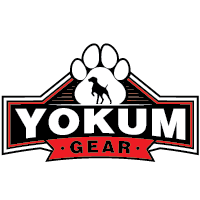Walking your dog is one of the simplest yet most enjoyable ways to bond with your furry friend. The right dog lead can make all the difference in ensuring these walks are safe, comfortable, and enjoyable for both you and your pet. With countless options available in the market, selecting the perfect dog lead may seem overwhelming. This guide aims to simplify the decision-making process and help you choose the ideal lead for your needs.
Understanding Different Types of Dog Leads
Dog leads come in various types, each serving different purposes and adapting to particular behaviors or training needs. Here are some common types:
Standard Leads
Standard leads are the most common type and are typically made of nylon or leather. They range from 4 to 8 feet in length, providing excellent control while allowing your dog some freedom to explore. A standard lead is ideal for daily walks in familiar, safe areas.
Retractable Leads
Retractable leads feature a long, adjustable cord that can extend up to 30 feet, allowing your dog more room to wander while still under your control. However, they can be harder to manage and may pose risks in crowded or high-traffic areas. These leads are best suited for well-trained dogs in open spaces.
Training Leads
Training leads, also known as long lines, are great for exercises that require greater distance, such as recall training. They range from 10 to 50 feet and provide the flexibility needed for various training exercises. These leads allow you to practice obedience commands while still maintaining control.
Hands-Free Leads
Hands-free leads are designed for active pet owners who enjoy running, hiking, or other outdoor activities with their dogs. These leads attach around your waist or over your shoulder, freeing up your hands and allowing for a more comfortable and versatile experience.
Material Matters
The material of a dog lead significantly impacts its durability, comfort, and functionality. Here’s a look at some common materials:
Nylon
Nylon leads are lightweight, durable, and affordable. They come in various colors and styles, making them a popular choice. However, they might not be as comfortable to hold, especially if your dog tends to pull.
Leather
Leather leads are known for their strength, durability, and aesthetics. They tend to become softer and more comfortable with use. Although slightly more expensive, a well-maintained leather lead can last for years.
Chain
Chain leads are primarily used for dogs that chew through other materials. While durable and chew-proof, they can be heavy and uncomfortable to hold. They are generally recommended for short walks and training sessions.
Choosing the Right Length and Width
The length and width of the lead play crucial roles in its effectiveness and comfort. For small dogs, a narrow lead is sufficient, providing control without much weight. Larger breeds, on the other hand, might require a wider, more robust lead to handle their strength.
For regular walks, a 4 to 6-foot lead is usually ideal. It offers enough room for your dog to explore while keeping them under control. For training or activities that require more freedom, consider longer leads, but always be cautious of potential hazards.
Reflective and High-Visibility Leads
If you walk your dog early in the morning, late at night, or in low-light conditions, a reflective or high-visibility lead is a wise choice. These leads are designed with reflective materials or bright colors to ensure both you and your dog are seen by motorists, cyclists, and other pedestrians, enhancing safety during your walks.
Comfort and Safety Features
Your comfort and your dog's safety are paramount when selecting a dog lead. Leads with padded handles can prevent hand strain during long walks and reduce the impact of sudden pulls. Additionally, look for leads with secure, easy-to-use clasps that attach firmly to your dog's collar or harness.
Making the Final Choice
Choosing the perfect dog lead involves considering your dog's size, behavior, and specific needs, as well as your lifestyle and walking habits. By understanding the different types and materials available, and prioritizing comfort and safety, you can find a lead that ensures enjoyable walks for you and your furry companion.
Remember, the right lead can enhance your dog's training, behavior, and overall walking experience, making every outing a pleasurable adventure.

